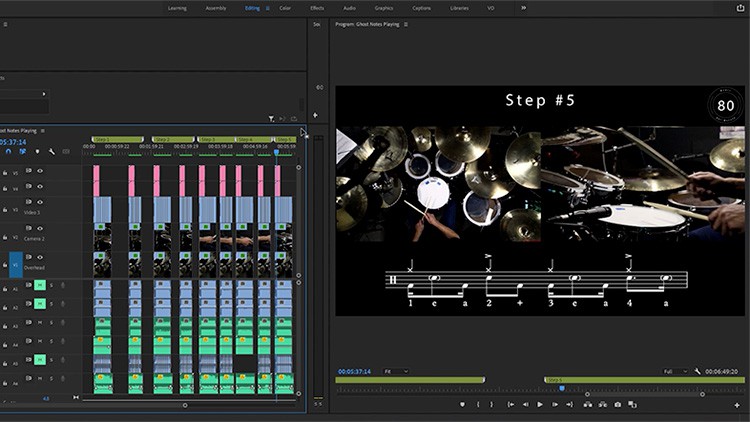
Ghosting with a Backbeat
What you will learn
Learning Ghost Notes
How to Practice
Applying Ghost Notes to Your Playing
Add Color and Texture to Your Drumming
Description
Ghost notes are an essential part of drumming; the one simple secret to mastering them is practice. A ghost note on the snare is played at a lower volume than your backbeat; typically, these are beats 2 and 4. These quieter notes add a lot of variety to your grooves and allow you to play the funky stuff. However, they can be tricky to learn, and beginners often play them too loudly.
The key to mastering ghost notes is repetition and muscle memory. You need to practice playing these quieter strokes until they become second nature. We will start by playing the backbeat at a comfortable volume, then gradually add in ghost notes on the “e” and “a” beats at a lower volume. As you get more comfortable with this technique, you will start adding more variations and complexity to the grooves. With enough practice, ghost notes will become integral to your drumming style!
Ghost notes can also be used to create interesting fills and transitions. You can use ghost notes to add subtle accents and texture when playing a fill. This will help the fill stand out from the rest of the groove.
Nevertheless, even if quiet, the ghost sound must be audible below the primary tones of the groove, which emphasizes a subtle 16th-note sensation around strong backbeat accents.
We take a completely different approach to online drum lessons: Screen recorded walk-throughs of every exercise, followed by play-along practice sessions. These practice sessions allow you to play with us, giving you the similar type of guidance you would receive by playing 1:1 with a live instructor. It’s one thing to watch a great lesson and another to have the tools to get those exercises, beats, and fills into your drumming vocabulary.
Content